World-renowned Research, Personal Connections
By Karen B. Moore
With an enrollment of 2200 undergraduate and graduate students, ESF is a tight-knit community, with researchers who undertake projects that extend
far beyond our borders. From restoring America’s landscape with a once-iconic tree to exploring the connection between COVID-19 and air pollution, ESF scientists are delving into issues and problems with wide impact.
What brings these researchers to ESF?
The Researchers
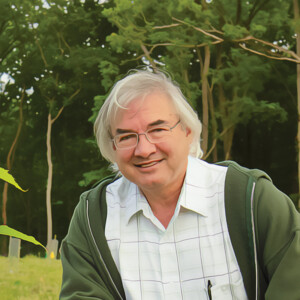
WILLIAM POWELL
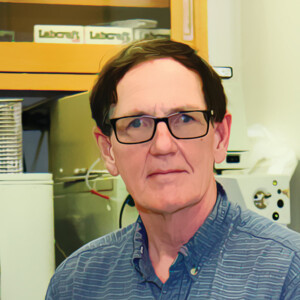
GREG BOYER
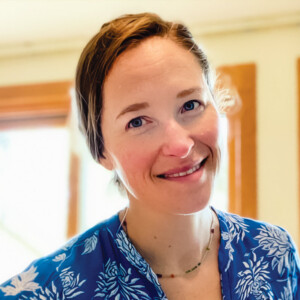
MARY COLLINS
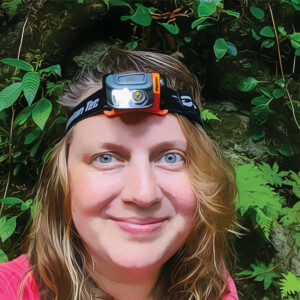
REBECCA RUNDELL
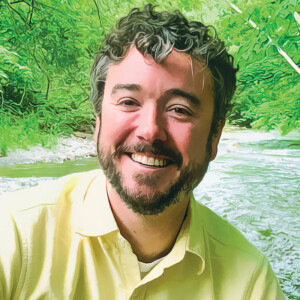
HYATT GREEN
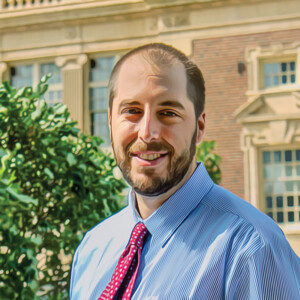
MICHAEL PETRONI
For Dr. William Powell, director of the American Chestnut Research & Restoration Project, it was the opportunity to do applied research. Larger universities focus on basic research, Powell noted of his experience when interviewing years ago at University of California, Berkeley. When he mentioned chestnut research, he was told “it was too applied” for them.
“That really threw me in the direction of ESF,” Powell said, “because ESF does allow you to do applied research.”
Powell has spent more than three decades working to restore the American chestnut tree after it was decimated by a blight. He and his
team developed new cultivars of American chestnut that can withstand the invasive blight that killed billions of the economically and culturally important trees in the early 20th century.
The chestnut project provides research that can be applied to other areas, Powell said. “We are learning new information that people can apply to help restore other threatened tree species,” said Powell. “One thing that drew me to this school that is you can do research that’s going to make a difference directly.”
The opportunity to work on applied projects is enhanced by the ability of researchers to work across disciplines.
Dr. Greg Boyer, chemistry professor and director for the Great Lakes Research Consortium, is involved in numerous projects related to harmful algal blooms (HAB). He remembered having to give two seminars when interviewing at the College 35 years ago. He gave one in chemistry and one in biology even though the position he was applying for was in the chemistry department. “That’s why I came here. That was 35 years ago and my opinion on that hasn’t changed. I still love that we can interact across departments … I used to jokingly say I’ve had graduate students in every department except landscape architecture.” The environmental focus also enticed Boyer. Larger universities may have a thousand faculty members, he said, “but how many of them are actually working on environmentally important issues? It’s always a very minor subset. I was attracted by the fact that even though it was a small school in total numbers, every one of the faculty was working on environmentally important issues.”
Dr. Mary Collins, assistant professor in the Department of Environmental Studies and part of the environmental health program on campus, echoed Boyer’s sentiments on the interdisciplinary nature of ESF. Collins’ interests are in the interdependence of social and ecological systems, particularly related to issues of equity and justice in the context of human health.
“I liked the idea of a place that had so many departments with the word environment in the title, and it seemed like a place where one might be less likely to be hampered by disciplinary slots,” said Collins. “I wanted a place where the lines of those things were blurred in a way and that asking interdisciplinary questions was valued.”
ESF’s interdisciplinary nature allows researchers to be “nimble in launching new ideas,” said Dr. Rebecca Rundell, associate professor in the Department of Environmental and Forest Biology. “You can directly reach out to anyone in a different department or parts of the administration.” Rundell’s work includes conservation of the Chittenango Ovate Amber Snail, an endangered species found only at the base of Chittenango Falls about 20 miles south of Syracuse.
“One of the things I most love about our students is how passionate and devoted to the environment they are, and how so many students at ESF do earnestly believe they can save the planet. That is the kind of place I want to be.”
—Rebecca Rundell
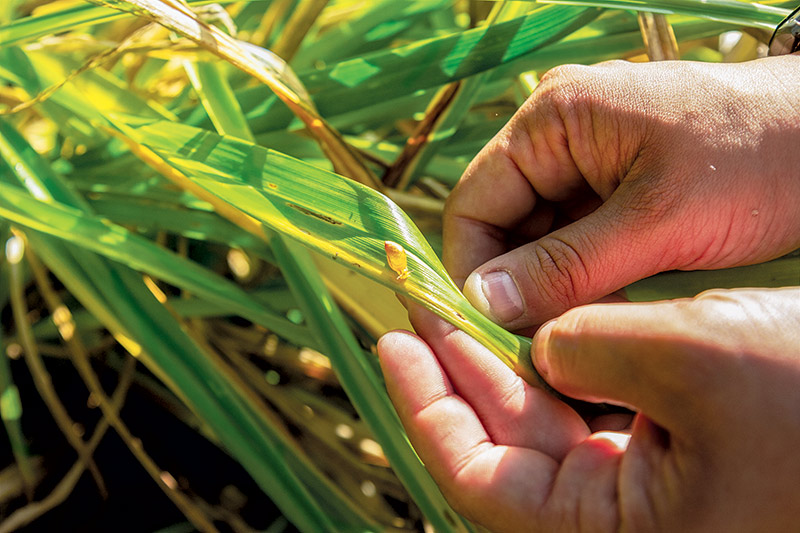
Chittenango ovate amber snails (COAS), a captive-bred endangered landsnail, were released at Chittenango Falls State Park Sept. 25. The individuals released were raised in the CIRTAS (Center for Integrated Research and Teaching in Aquatic Sciences) Laboratory on ESF’s main campus. COAS is known only from one location at the Central New York state park.
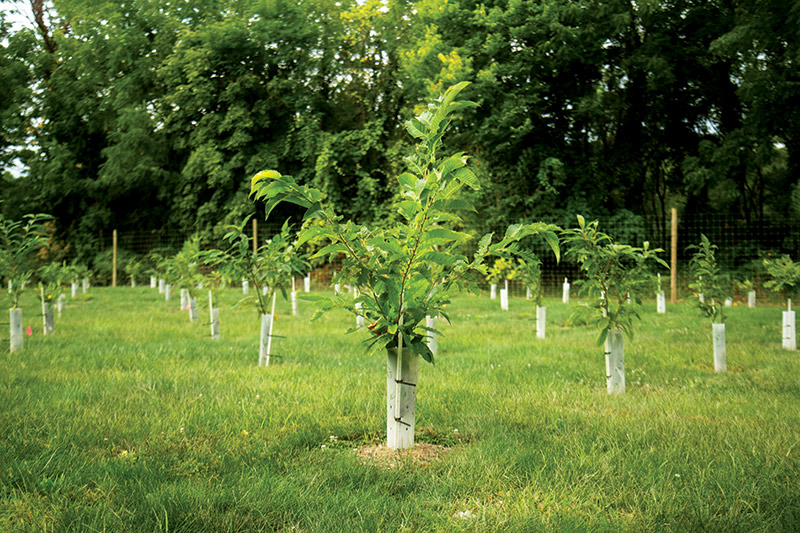
American chestnut seedlings planted in the spring of 2020 have matured into saplings at the 44-acre plot at the Lafayette Road Experiment Station. This photo was taken in October 2020.
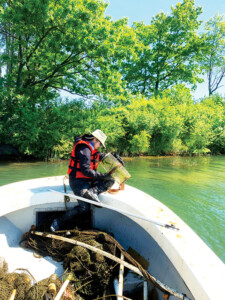
ESF graduate student Iman Pakzad is assisting ESF Professor
Roxanne Razavi, Ph.D., with the Great Lakes Research Consortium-
funded project investigating the potential for tubenose goby to
act as a vector of mercury in the aquatic ecosystem.
Dr. Hyatt Green, assistant professor in the Department of Environmental and Forest Biology, was able to pivot quickly to respond to the coronavirus pandemic with his lab’s work in developing the SARS-CoV2 Early Warning Wastewater Surveillance Platform (SARS2-EWSP). The platform monitors the presence of SARS-CoV-2 RNA in wastewater, alerting the state and participating cities to increases and decreases in viral transmission.
His lab’s expertise in environmental microbiology and molecular method development was absolutely essential to the project and Green credits his research team — Ariana Fenty, lab technician (’20), and Maxwell Wilder, a Ph.D. student — for the success of the project.
“This was in mid-April [2020] at the height of the pandemic, and they were coming into the lab using their knowledge and skills in molecular biology to do what they could to help fight the pandemic. Where else do you find such passionate students who see the big picture?” he asked.
Green wasn’t the only professor drawn into research related to the pandemic or who views students to be one of ESF’s strongest assets.
Collins worked with her graduate students on the connection between COVID-19 mortality rates and air pollution, research that was picked up by numerous media outlets in the fall. Collins is quick to point out that her name came at the end of the author list, because the students lead the research.
“Across the board, the students who I’ve interacted with at ESF are amazing,” said Collins, “and it doesn’t matter what level they’re at.” The COVID paper involved both undergraduate and graduate students across several departments and programs.
Michael Petroni, Ph.D. candidate in the graduate program of environmental science and lead author on the study, agreed that students have more opportunities to get involved in research at ESF, but they also receive more guidance and support from faculty.
“What was useful for me was how Mary networked with policymakers, administrators, and other universities,” said Petroni. “This allowed us to push our boundaries outside the walls of ESF and take on big questions.”
“Larger universities have a lot of students. There’s only so many research projects they can get involved with,” said Powell. “There’s a lot of competition to get into those labs. Whereas, at our school there’s a good ratio of faculty to students, and there are more opportunities at ESF for working on research projects.”
The reputation of the student body is also a draw for researchers. Rundell said the support and input of Ph.D. students are vital to the success of her research, and she “wanted to be able to generate sorely needed invertebrate experts in my field.”
“When I interviewed here, every faculty member I spoke to bragged about the students,” said Rundell. “One of the things they most love about our students is how passionate and devoted to the environment they are, and how so many students at ESF do earnestly believe they can save the planet. That is the kind of place I want to be.”
Rundell also wanted to be where there were still many intact natural history collections, such as the Roosevelt Wild Life Collections. “At so many institutions, collections have been gutted in favor of the latest technology or human-focused research programs,” said Rundell. “Organismal biology education suffers when that happens. For me, this meant that at ESF I would have a strong foundation with an invertebrate collection that would have been impossible to build myself.”
“ESF, in contrast, revered natural history, rather than abandoning it for more reductionist fields in the 1980s, as many universities did,” she said. Taking the long view has paid off for ESF, according to Rundell, “because answering the big questions in my field requires students who know about whole organisms and their habitats.”
Similarly Green cited that being able to access ongoing projects and domain expertise at ESF allowed him to plug into numerous research areas to test his lab’s methods. “The result has been a suite of optimized environmental DNA, — or ‘eDNA’ — methods to help survey species like American eel, muskellunge, and North American river otter,” he said.
Access to ESF’s regional properties and the proximity to Green Lakes in Fayetteville, New York, were also a draw for Green who focuses on molecular method development and implementation.
“Sites such as Huntington Wildlife Forest in the Adirondacks were extremely attractive, since prior work by researchers like Dr. Myron Mitchell laid the foundation for our group to make discoveries in microbial ecology,” said Green.
Green has a grant from the National Science Foundation to explore the dangers of methylmercury, a toxic substance believed to be one of the most poisonous among the mercury compounds. That research is being conducted in nearby Green Lakes. “It’s one of the most-highly studied lakes in the world,” noted Green.
“We can now use that prior understanding to help uncover much of the ‘microbial dark matter,’ or unknown microbes with potentially novel physiologies, within.”
Karen B. Moore is the senior writer in the Office of Communications and Marketing.
Contact a Researcher
- Dr. Gregory Boyer
Great Lakes Research Consortium
https://www.esf.edu/glrc/
https://tinyurl.com/boyer-biochem - Dr. Mary Collins
https://tinyurl.com/super-pollute - Dr. Hyatt Green
https://tinyurl.com/green-covid19
- Michael Petroni
https://tinyurl.com/petroni-pollute - Dr. William Powell
American Chestnut Project
https://www.esf.edu/chestnut/ - Dr. Rebecca Rundell
https://tinyurl.com/rundell-snails
https://tinyurl.com/snail2-rundell


